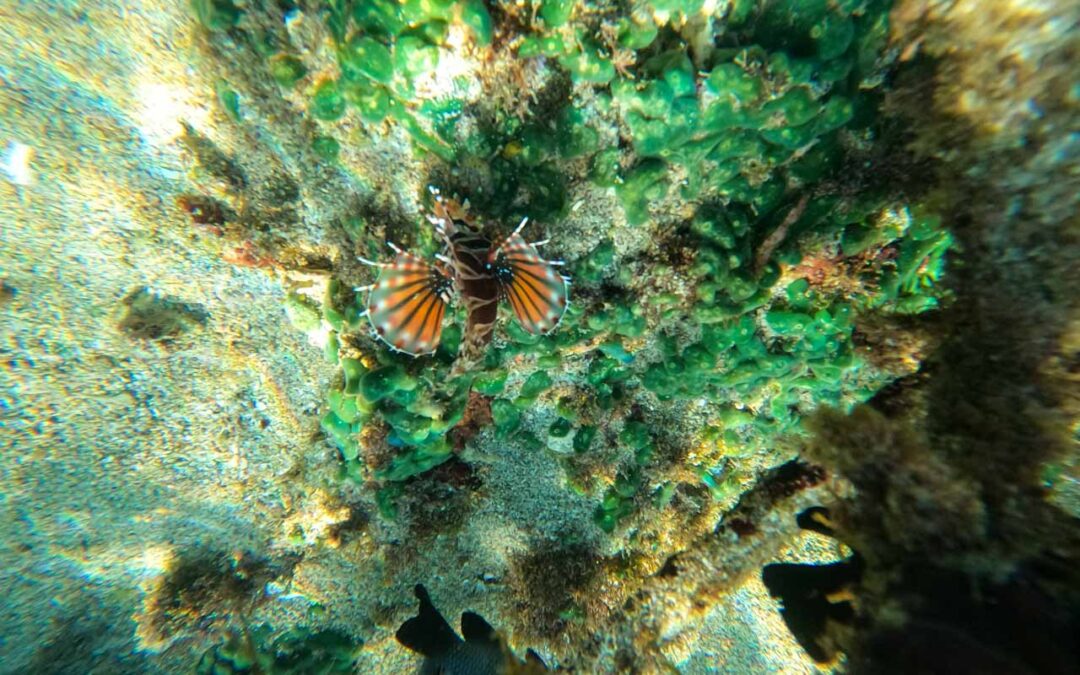During one of our recent coral maintenance at the R.O.L.E. Foundation Coral Garden in Nusa Dua Beach, we were treated to an incredible surprise, a lionfish slowly gliding between the reef structures we’ve been nurturing. Moments like this are more than just exciting sightings; they are powerful reminders of why we dedicate ourselves to marine conservation and coral reef restoration.
Witnessing the Beauty Firsthand
Seeing a lionfish up close is always captivating. Its vibrant stripes of white, maroon, and orange stood out brilliantly against the coral backdrop. The long, delicate fins drifted like ribbons in the water, giving it a regal and almost hypnotic presence. From our perspective as caretakers of the reef, it felt as though the lionfish was both a visitor and a silent reminder of the ocean’s complexity.
Fun Facts About Lionfish
As a team that works closely with marine life, we’re always eager to share what makes these creatures unique:
- Venomous Defenses: Their sharp spines carry venom used only for defense. While not deadly to humans, they can cause a painful sting.
- Silent Hunters: Lionfish are stealthy predators, often using their large fins to corner small fish before striking.
- Reproductive Power: A single female can release up to 2 million eggs per year, which explains why they spread so quickly in non-native areas.
- A Native of the Indo-Pacific: While they’ve become invasive in other parts of the world, here in their home waters, they’re part of the natural balance of the reef.
The Role of Lionfish in the Reef Ecosystem
In the Indo-Pacific, lionfish are a natural predator within coral reef systems. They help regulate smaller reef fish populations, contributing to the overall balance of the ecosystem. Unlike in regions such as the Caribbean, where they lack natural predators, here in Nusa Dua, lionfish coexist as part of the reef’s biodiversity.
For us at the R.O.L.E. Foundation, observing a lionfish in our Coral Garden reinforces the importance of creating healthy reef environments where species can thrive. Every coral structure we restore becomes habitat not just for fish, but for the entire marine food web. Encounters like this make the hard work of restoration feel especially meaningful.
A Moment of Reflection Underwater
As we continued our coral maintenance, we couldn’t help but pause and watch this magnificent fish move with such grace. Its beauty reminded us that the ocean is not only fragile but also incredibly resilient when given the chance to heal. The lionfish, with all its elegance and complexity, embodies the very reason we work tirelessly to restore and protect coral ecosystems.
To witness a lionfish in the Coral Garden we care for is both a privilege and an inspiration. It motivates us to keep working toward healthy reefs, where marine life—from the smallest fish to the most striking predators—can thrive in harmony.


Recent Comments